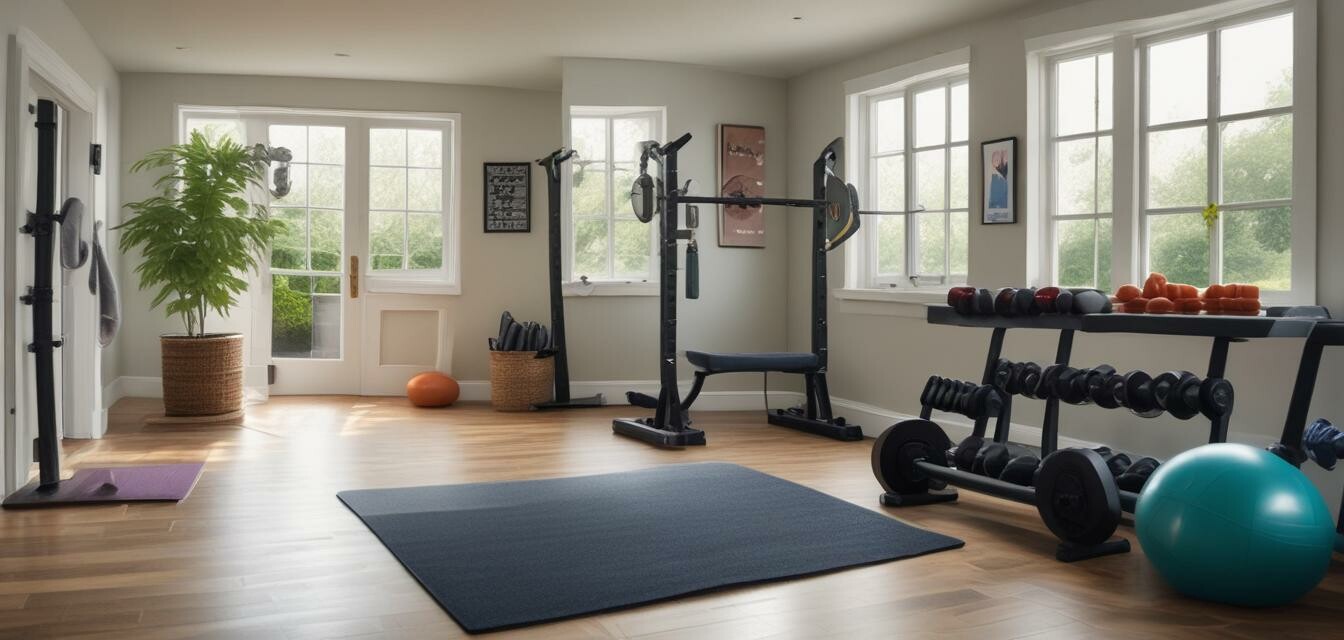
How to Optimize Your Home Gym Space
Key Takeaways
- Assess the available space before purchasing equipment.
- Prioritize multifunctional equipment for limited areas.
- Keep your gym organized through effective storage solutions.
- Maximize your routine with a crafted workout plan.
- Consider lighting and ventilation for a pleasant workout environment.
Creating an effective home gym is about more than just having the right equipment. It's critical to make the most of your available space, especially if you're working with a limited area. In this guide, we'll explore various strategies and tips to help you optimize your home gym space, transforming it into a functional and inspiring area for your fitness journey.
Assess Your Available Space
The first step in optimizing your home gym is to conduct a thorough assessment of your available space. Here’s how to get started:
- Measure dimensions: Use a tape measure to determine the size of the room or area where you intend to set up your gym.
- Evaluate your current setup: Take note of what is already in the space, including furniture and existing equipment.
- Identify potential areas: Look for underutilized corners or sections of your home that could be repurposed for workouts.
Prioritize Multifunctional Equipment
One of the best strategies for optimizing your home gym space is to select multifunctional fitness equipment. Here are some options to consider:
| Equipment Type | Functionality | Space Saving |
|---|---|---|
| Resistance bands | Strength training, flexibility exercises | Compact and portable |
| Adjustable dumbbells | Multiple weight options in one set | Saves space compared to multiple sets |
| Exercise ball | Strength, core workout, balance training | Can double as a chair |
| Foldable exercise bench | Strength training, stretching, body weight exercises | Easy to store when not in use |
Organize Your Space Efficiently
To maintain a tidy and efficient gym, consider the following storage solutions:
- Wall-mounted racks: Ideal for storing weights and accessories while keeping the floor space clear.
- Storage bins: Use clear bins to organize smaller items like towels and resistance bands.
- Overhead storage: Install shelves or hanging organizers for items you use occasionally.
- Designate zones: Create specific areas for different workouts (e.g., cardio, strength training) to keep your routine focused.
Craft a Functional Workout Plan
With your space organized and optimized, the next step is to develop a workout plan that complements your new setup. Here’s how:
- Set achievable goals: Determine your fitness goals, whether it's weight loss, strength training, or general fitness.
- Choose workouts that fit: Select exercises that effectively use the equipment you have available.
- Create a schedule: Plan daily or weekly routines that include a mix of strength training, cardio, and flexibility work.
- Include rest days: Allow recovery time to prevent burnout and promote muscle growth.
Enhance Your Environment
An inviting environment can significantly impact your motivation and performance. Here are some tips to enhance your home gym:
- Lighting: Opt for bright, natural light or soft lighting options that can energize or calm you as needed.
- Ventilation: Ensure your space is well-ventilated to keep the air fresh during workouts.
- Personal touches: Decorate with inspiring quotes or photos to keep you motivated.
Useful Resources
For more insights on choosing the right equipment and getting started with your home gym, check out our blog categories:
- Tips and advice - Helpful guidance for your fitness journey.
- Buying guides - Essential information for selecting fitness gear.
- Home gym essentials - Find must-have items for your home setup.
Pros
- Increased workout efficiency.
- Better space management.
- Cost savings from purchasing multifunctional equipment.
- Improved motivation in a personalized environment.
Cons
- Initial setup may require time and effort.
- Possible space limitations for larger equipment.
- Organization may require regular maintenance.
Conclusion
Optimizing your home gym space doesn't have to be a daunting task. By assessing your space, prioritizing multifunctional equipment, staying organized, planning effective workouts, and enhancing your environment, you can create a motivating and efficient workout area. Remember, the key to a successful home gym is making it work for you, so take the time to customize it according to your preferences and needs.